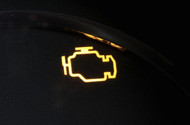OBDII Diagnostic Trouble Codes: Common Codes And Their Potential Causes – 7.3L and 6.0L Powerstroke
Posted by Adam Blattenberg on Jun 26th 2025
In 1995 Ford began implementing the OBDII system in most of their vehicles. By 1996, due to a federal mandate, all vehicles were using the system. OBDII or On Board Diagnostics 2, gave us tons more data from the vehicle’s computer’s making diagnosing a problem much easier than ever before. If a sensor fails or isn’t giving the computer the readings it’s expecting to see, the system will tell you which sensor is problematic, via a scan tool. But it’s not a perfect system, you still need to use diagnostic skill and system knowledge to be able to diagnose the problem correctly. For example, if a wire broke, or a computer failed, the computer won’t know that, it’ll just tell you the sensor on the end of that wire isn’t reading correctly, or that all sensors associated with that computer are problematic. Diagnostic Trouble Codes (DTC’s) are just one of the many tools the OBDII system gives us.
Now, if you’ve got a 1994.5 or 1995 7.3L Powerstroke equipped truck, you might have the newer OBDII, or the older OBDI, and you could have both. 6.0L owners, you’ve all got OBDII. For the early 1994.5-1995 owners with OBDI, sorry, we’ll get to you another time, for the rest of us, here’s a list of all common codes and what they likely mean. Use this list to get yourself pointed in the right direction.
7.3L Powerstroke Common DTC’s
P0122 – TPS (Throttle Position Sensor) Circuit Low Input
Potential Cause: Faulty TPS or wiring issue.
P0221/P0220 – TPS Signal Inconsistent or Out of Range
Potential Cause: Bad TPS or worn throttle pedal sensor.
P0261 thru P0278 (last number is the related cylinder) – Cylinder X Injector Circuit Low
Potential Cause: Injector solenoid issue, IDM fault, or harness/UVCH issue.
P0340 – Camshaft Position Sensor Circuit Malfunction
Potential Cause: Failed CPS (very common on 7.3L), especially on cold starts or when hot.
P0380 – Glow Plug Circuit Fault
Potential Cause: Failed glow plug relay, bad glow plugs, wiring faults.
P0470 – Exhaust Backpressure Sensor Malfunction
Potential Cause: Failed EBP sensor or clogged sensor tube.
P0475 – Exhaust Pressure Control Valve Malfunction
Potential Cause: EBPV actuator or wiring failure. Often removed in performance applications.
P1211 – ICP (Injection Control Pressure) Higher/Lower Than Desired
Potential Cause: Failed ICP sensor, IPR valve issue, HPOP unable to build pressure, oil aeration, or low oil level.
P1212 – ICP Pressure Not Controllable
Potential Cause: IPR valve stuck or faulty, HPOP failure, or oil system leak.
P1280 – ICP Circuit Out of Range Low
Potential Cause: Failed ICP sensor or wiring short to ground.
P1281 – ICP Circuit Out of Range High
Potential Cause: Failed ICP sensor or short to power.
P1298 – IDM Failure
Potential Cause: Injector Driver Module issue, often internal circuit fault or poor ground.
P1316 – IDM Codes Present (Cylinder Contribution/Injector codes)
Potential Cause: This code accompanies other cylinder-related codes. Often indicates faulty injector(s) or UVCH (Under Valve Cover Harness).
6.0L Powerstroke DTC’s
P0191 – Fuel Rail Pressure Sensor Range/Performance
Potential Cause: Bad FRP sensor or erratic fuel pressure. Often related to weak fuel pump or bad/clogged fuel filters.
P0148 – Fuel Delivery Error
Potential Cause: HP or LP fuel system issue—possible injector sticking or contamination.
P0261 thru P0278 – Injector Circuit Low (injectors 1-8)
Potential Cause: Bad injector solenoid, wiring issue, FICM fault, or Under Valve Cover Harness issue.
P0299 – Turbo Underboost
Potential Cause: Sticking VGT vanes, bad VGT actuator, exhaust leaks, leaking intercooler boot.
P0301 thru P0308 (last number is the related cylinder) – Cylinder X Misfire
Potential Cause: Failing injector, FICM voltage problem, compression issue, fuel delivery.
P0401 – EGR Flow Insufficient
Potential Cause: Clogged EGR valve, sticky valve, carboned-up intake manifold.
P0402 – EGR Flow Excessive
Potential Cause: EGR valve stuck open, causing rough idle, white smoke, or low power.
P0404 – EGR Control Circuit Range/Performance
Potential Cause: Failed EGR valve or position sensor issue.
P0611 – FICM Performance
Potential Cause: Internal FICM failure (logic or power board), low voltage, poor solder joints. Can cause hard starts or misfires.
P0670 – Glow Plug Control Module Fault
Potential Cause: Failed GPCM, often due to moisture intrusion.
P0671–P0678 (last number is the related cylinder) – Glow Plug Circuit Cylinder X
Potential Cause: Bad glow plug, bad harness connection, or GPCM fault.
P1000 – OBD Readiness Test Not Complete
Not a fault, just means drive cycle hasn’t completed. Drive the truck more.
P1378 – FICM Supply Voltage Low
Potential Cause: FICM is not supplying correct 48V to injectors. Often a failing power supply board in FICM.
P2285 – ICP Sensor Circuit Low
Potential Cause: Failed ICP sensor, damaged connector, or short to ground.
P2284 – ICP Sensor Circuit Range/Performance
Potential Cause: Erratic or stuck ICP sensor, or wiring fault.
P2290 – IPR (Injection Pressure Regulator) – Low Oil Pressure
Potential Cause: Stuck IPR, low HPOP output, oil leak in high-pressure system (STC fitting, dummy plugs, standpipes).
P2291 – Injector Control Pressure Too Low – Engine Cranking
Potential Cause: Common in no-start conditions. Usually a high-pressure oil leak under the valve covers or in the HPOP system.
P2563 – Turbocharger Boost Control Position Sensor Circuit
Potential Cause: Faulty VGT actuator or turbo vane position sensor.








